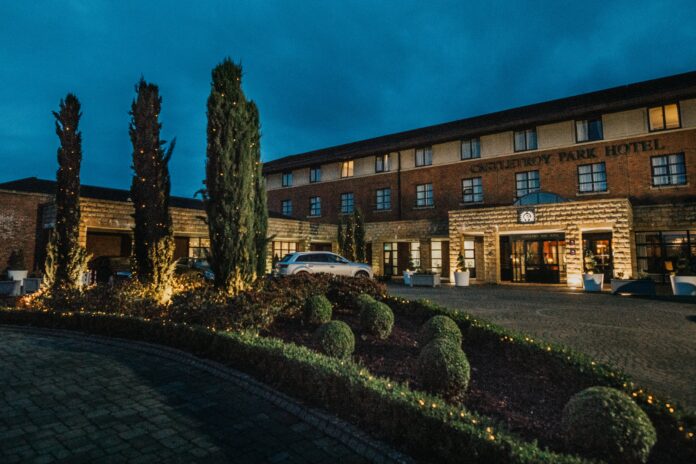
HOTELS and guesthouses in Limerick and across the country have faced another exceptionally challenging year due to Covid. Average room occupancy levels for 2021 stand at 22% for the Mid-West including Limerick year to date according to the latest industry research from the Irish Hotels Federation (IHF). With the summer over, the sector is entering an uncertain nine months as booking levels fall sharply in the absence of overseas visitors, meetings and events which would normally sustain the sector during the off-peak season.
Dermot Kelly, Chair of the Shannon Branch of the IHF is urging the Government to give a firm commitment to continue business and employment supports until international tourism recovery begins in earnest in summer 2022. “Government supports have been a vital lifeline for tourism businesses, including hotels and guesthouses in Limerick – many of these businesses would not have survived without the emergency measures put in place throughout this crisis. We now have a long road to recovery ahead of us, and this will require further targeted assistance for tourism and hospitality and the almost 270,000 livelihoods supported by tourism before Covid – one in ten of all Irish jobs, including 11500 here in Limerick.
Government measures sought by the IHF include the extension of the current EWSS employment supports until June 2022 to help businesses retain and develop their teams over the coming months; the retention of the 9% tourism VAT rate until after 2025 to allow Irish tourism to compete internationally; and the extension of the commercial rates waiver until June 2022 when the summer seasons begins. Substantial additional funding is also required for international marketing and the restoration of air connectivity with overseas markets to 2019 levels.
“Additional support for route development is vital. The connectivity provided by Aer Lingus at Shannon has always been a valuable and important contributor to the economic development of this region. Pre-pandemic, the London Heathrow route and transatlantic routes provided the essential connectivity that companies required to sustain their business links, and the tourism and hospitality sectors along the western seaboard required to drive tourism into the region. Aer Lingus services to/from Shannon were well supported in the past and a return to the frequent and timely services is needed.”
Mr Kelly notes that while the domestic tourism market performed well over the summer months with average room occupancy in the Mid-West of 60%, business has been exceptionally poor year-to-date with occupancy levels averaging 22% for the first eight months due to the sector being shut until June. The sector is still subject to a delay in the full lifting of restrictions on hospitality and indoor events until 22nd October as well as significant uncertainty around international travel, including travel advice from the US Government against travel to Ireland which is impacting on forward bookings.
Under the most optimistic scenario for the remainder of 2021, average occupancy is projected to reach 32% nationally for the year as whole – a significant collapse in activity compared with 2019, when room occupancy was 73% and is only a modest increase on the all-time historic low of 30% reached in 2020.
“The economic and financial impact of Covid has been devastating for our sector and wider tourism industry, directly impacting on the livelihoods of tens of thousands of people. Hotels and guesthouses nationally will have seen a combined €5.3bn drop in revenues across 2020 and 2021 as a direct result of this crisis with overall revenues dropping 68% in 2020 and 55% this year. In real terms that’s over 19 million room nights lost, billions wiped out in food and beverage sales, and countless missed opportunities for hotels reliant on entertainment, business meetings and events – as well the enormous impact on the many thousands of suppliers to our sector.”
“It is critical that the Government provides continued supports for our sector so that businesses have a fighting chance of getting back on their feet over the coming years. As Ireland’s largest indigenous employer, tourism and hospitality has been hardest hit by Covid restrictions.
“The thousands of livelihoods supported by tourism businesses in Limerick matter – not only to the people working within the industry but also to the wider economy, especially the many areas where tourism is the only show in town. A failure to support the tourism and hospitality industry now will have ramifications for the future of Ireland’s tourism offering and for the economy.
The research was carried out 1st-6th September and results are based on the response from 331 properties. These account for a combined stock of 34,300 guestrooms spread throughout the entire country.
Occupancy Results Year to Date (Jan-Aug 2021)*
- National room occupancy: 22%
- Dublin City and County: 14%
- Other Cities: 24%
- Border region: 27%
- Mid-West: 22%
- Midlands / Mid East: 25%
- South East: 31%
- South West: 27%
- West: 27%
Advance Room Bookings for Sept-Dec 2021**
- National room occupancy: 25%
- Dublin City and County: 16%
- Other Cities: 21%
- Border region: 32%
- Mid-West: 24%
- Midlands / Mid East: 29%
- South East: 37%
- South West: 28%
- West: 28%
* Figures for Jan-Aug 2021 represent actual bookings achieved.
**Figures for Sept-Dec 2021 represent room currently booked in advance – these are likely to increase during the remainder of the year, bringing average annual room bookings for the country as a whole to 32% based on projected future booking patterns.


